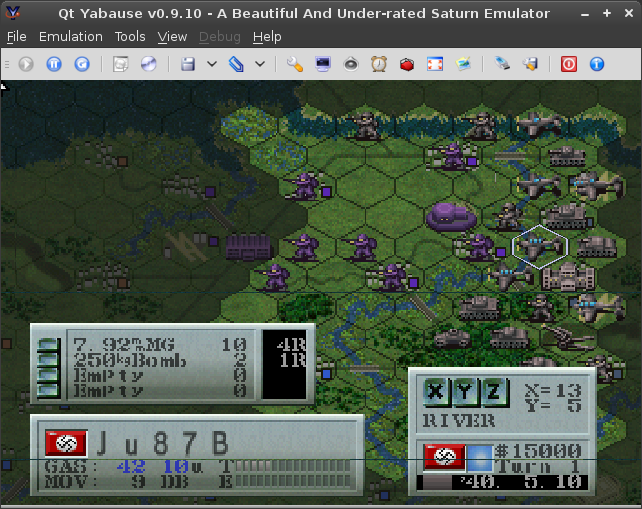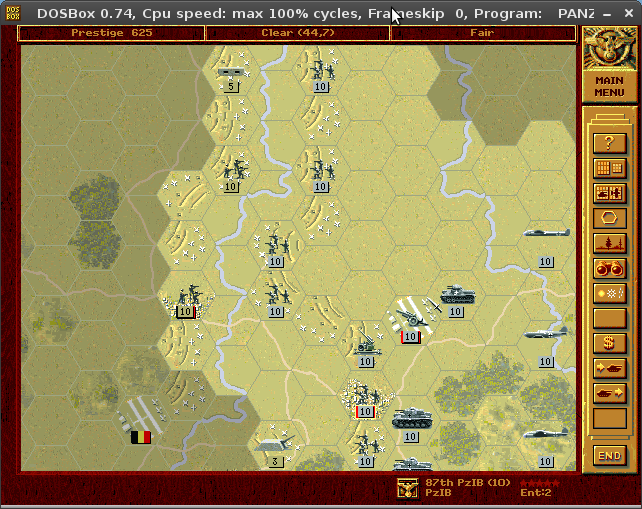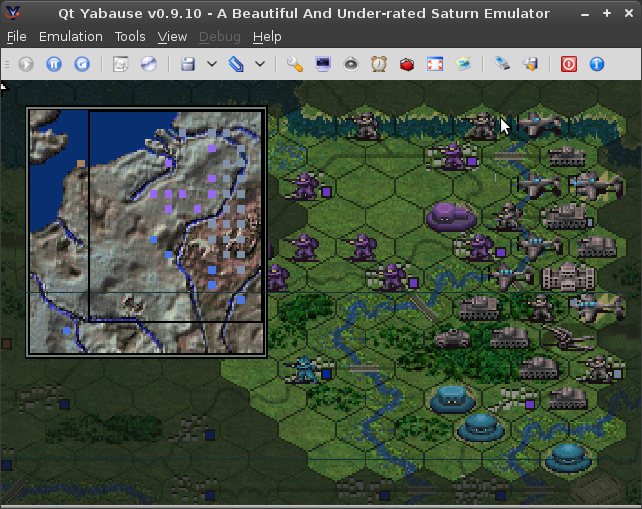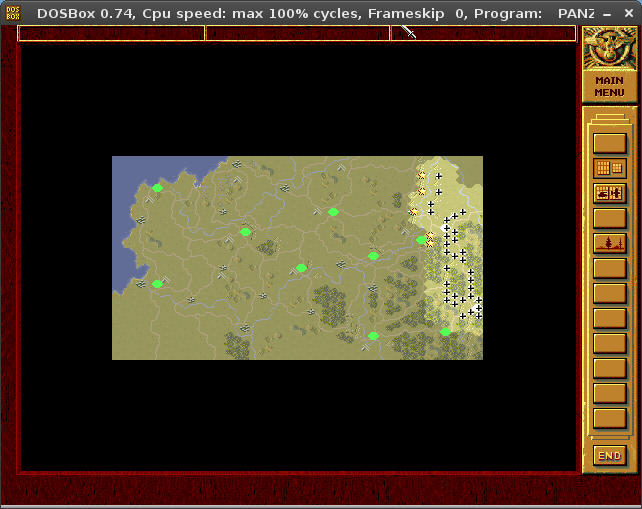Panzer General, Iron Storm, and a momentous decision
By the end of 1995 I had to face the fact that my cherished Super Nintendo was a dying platform. This reality was driven home by weekly trip to Blockbusters. Each visit always took longer than the one before it, in part because the games for new platforms like the Saturn and Playstation distracted me, in part because the dwindling stream of new Super Nintendo games left me little to choose from without hesitation. I knew that continued gaming contentedness depended on upgrading to one of these new consoles. (A PC, which offers eternal gaming bliss, wasn't yet in the cards.)
But which console to choose? For the first half-year out of the gate, the Saturn and the Playstation appealed to me equally. Each had similar graphical capabilities, similar prices, and, if the games weren't entirely similar, each offered an equal number of interesting titles.
The impasse I found myself at is maybe best demonstrated by the difficulty I had in choosing between two games: Iron Storm on the Sega Saturn and Panzer General on the Playstation. Both were turn-based strategy games that simulated (in a very high-level sense) World War II and both were said to be very good. I really wanted one of these but I had no idea which. Briefly in the spring of 1996 my decision of which console to save for hinged on whether I wanted Iron Storm or Panzer General.
As it turned out, by the middle of 1996 the Playstation had secured a small but growing lead over the Saturn. I fortunately realized that buying a Saturn would be foolish no matter how good Iron Storm was. With the decision made for me, I got my Playstation and, sometime later, a copy of Panzer General. Both buys were wise. The Playstation eventually drove the Saturn from the Market and Panzer General is still one of my favorite games of all time.
Still, I sometimes wondered exactly what I missed in Iron Storm. 15 years after that game first caught my eye, I finally found a chance to give it a spin.
Having got hold of a copy of the game, my next step was to emulate a Saturn. For this I used Yabause. The name is an acronym of Yet Another Broken And Useless Saturn Emulator. (I don't know if it's Yabause or my computer, or both, that is lacking, but I never got above seven frames per second when running Iron Storm.)
My first impression of the game itself, gained from the fancy menus, was that Iron Storm was a fancier Panzer General.
The very first turn of the very only scenario I tried disabused me of this notion. This game does not exceed Panzer General in any sense. Graphically, that's obvious at the outset of the first turn. Even the charitable types who might accept Super Nintendo-level visuals will find themselves cursing the graphics for making it so difficult to locate units, much less tell them apart.

Compare this to Panzer General. In Panzer General, units always stand out against the background, and you can easily distinguish their specific type, even though the game has more than four or six or however many icons Iron Storm has.

In the two screenshots above air units don't occupy the same hexes as ground units. In Panzer General, however, they can and must if they're to attack. In Iron Storm, trying to move an air unit atop a ground unit produces a message saying that two units can't occupy the same hex. What, are Dutch soldiers 5,000 feet tall? (Possibly.) This isn't nitpicking, either. Imagine encircling a strong concentration of enemies only to find that your "air"planes in Iron Storm can't actually fly over enemies, only move next to them -- and then only if your infantry isn't already there.
Another one of Iron Storm's shortcomings is the "strategic map" that lets you view the disposition of forces at a glance. Simply put, this map bears little resemblance to the actual gameplay map and doesn't really seem to have the right scale. It's like it takes the hundreds of hexes of the gameplay map and condenses them into a 16x16 grid of squares.

Panzer General, on the other hand, gets things right by using as its strategic map a zoomed-out equivalent of the gameplay map. You can see roads, cities, rivers, forests, fog of war, and your objectives.

One thing Iron Storm does better than Panzer General is battle animations. Iron Storm's are 3D and just might've impressed me when I was 12. Panzer General's are 2D and quite boring. In any event, battle animations are not something you want to sit through more than once. Virtually every player will quickly disable them. Iron Storm's only leg-up on Panzer General therefore amounts to nothing.
By the time I had noted these differences, my enthusiasm for Iron Storm was gone forever. Considered on its own merits, Iron Storm could have been an adequate game at one time. It's just not the timeless classic that Panzer General is.